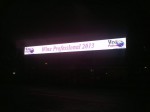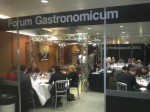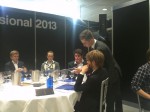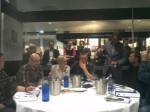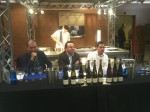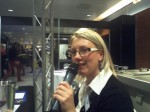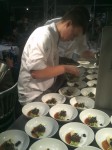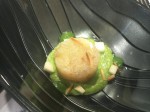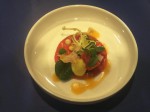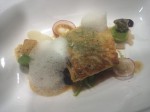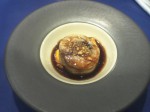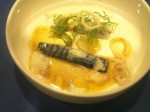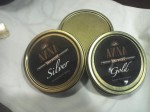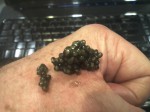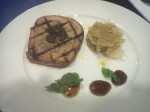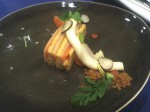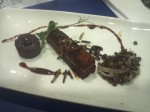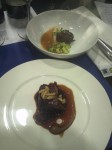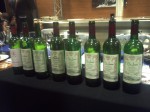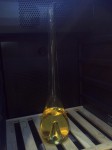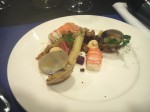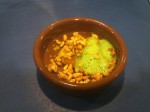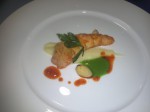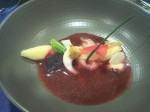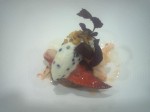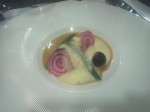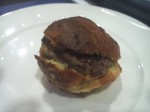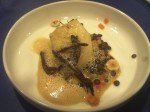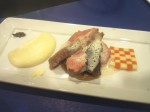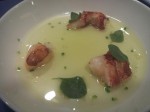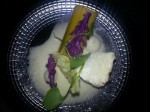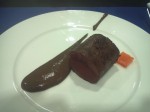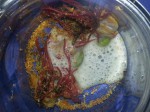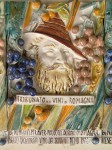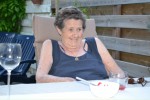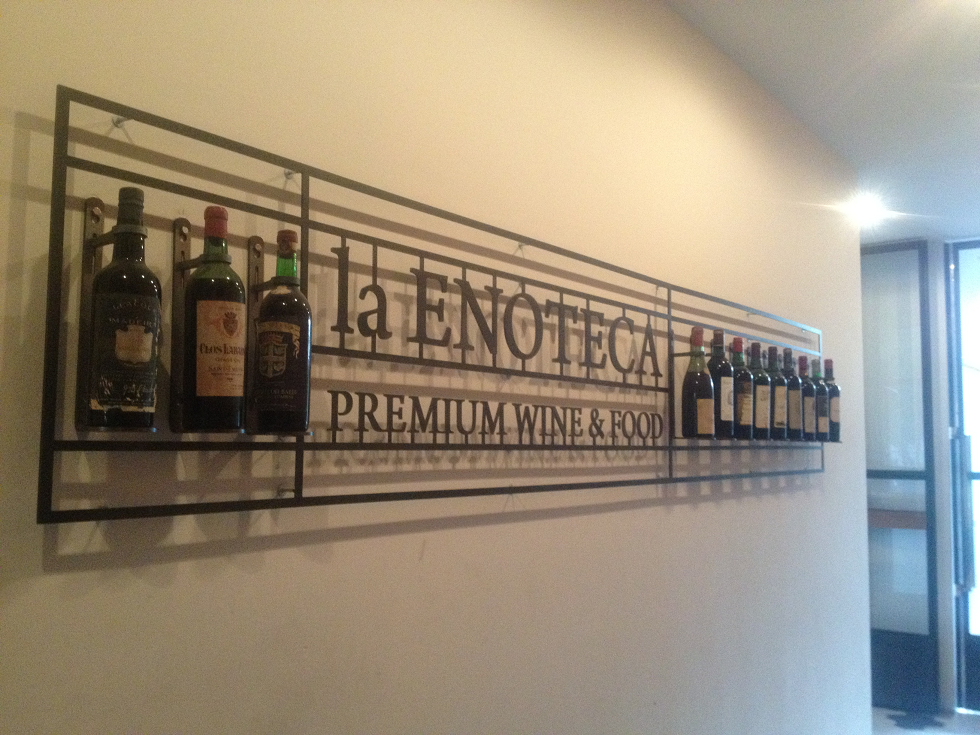 De grote finale…..
De grote finale…..
De vorige 3 stukken die ik over mousserende wijnen schreef, waren vooral bedoeld om de enorme verschillen tussen mousserende wijnen te benadrukken.
The grand finale …..
The last three pieces I wrote on sparkling wines, were primarily intended to emphasize the differences between them. Some time ago, I organized an evening at La Enoteca in Rotterdam where the diversity could actually be tasted. It is fun to read about it, but to experience the colours and flavours yourself, is of course quite different and a lot more fun. I hope that this article inspires many to do the same.
The evening at la Enoteca made clear that sparkling wines are incomparable, even if they come from the same region. The typicity of the country, a specific terroir, other grape varieties, individual philosophy of winemakers and alternative winemaking methods, provide a variety that is unparalleled. It is wonderful to taste them all and choose your own favourites.
The unique characteristics of each individual sparkling wine, makes it possible for everyone to choose his or her favourites, for different moods, moments, seasons and of course, to enjoy with a huge variety of dishes.
The latter was extensively ’tested’ in La Enoteca, a very pleasant place to enjoy the finest wines and special food without the sometimes inevitable bla bla. The winelist of La Enoteca is impressive and has many ‘collector’s items’ which do not just gather dust, but are there to be enjoyed. At first owner Lou Borrani may seem a cocky, arrogant fanatic from Rotterdam (apologies: Schiedam), but who looks behind this façade, clearly sees a driven, highly experienced, knowledgeable professional, a generous host with it’s heart in the right place and an unparalleled passion for wine and good food. The team of La Enoteca assured the right ambiance, glasses, service and many tasteful dishes that led to some surprising wine & food pairings.
In company of good friends and relatives, we tasted about 30 sparkling wines, most of them in series of three to accentuate their differences in colour, flavour and taste even better. No contest, but an exploration of varieties in character. It soon became clear that there is indeed no such thing as “a sparkling wine”, a Champagne, a Lambrusco or a Franciacorta. Almost without any exceptions, the wines showed the typical expression of their terroir, grapes and the hand of the winemaker who in the end decides what happens with all those influences. Therefore it was not strange, but fun and instructive to taste a sparkling Riesling from Germany as well as a Sparkling Shiraz from Australia.
After several hours of tasting and it was also clear that, although the overall quality was high, there are large differences in appreciation by those who taste the wines. Recently on TV it was shown again that not only consumers, but also experienced professionals rarely agree when tasting wines. My assertion that wine tasting is not an exact science and “points are pointless’, it was confirmed. Also at La Enoteca opinions varied. But, more important, everyone enjoyed the selection and could choose his or her own favourites, often more than one (two, three…). Below, a list of the wines, a brief explanation and my taste experience in words. Perhaps a source of inspiration for others.
Prior to that overview, my thanks to:
– Importers:
Bacchantes, Bubbles by Bruud, August Hoon, Hosman Vins, Karakter Wijnimport, De Microscoop, Moët-Hennessy Netherlands, Residence Wines, Verbunt Wijnkopers, De Vier Heemskinderen, Vinites and Werkhoven Wines
– Producers:
Berlucchi, Casebianche, Castagna, Cleto Chiarli, Andrea Faccio / Villa Giada, Medici Ermete and Raventós i Blanc
– Tot PR
– Nitiya and Daan Jonker for several pictures
And last but not least:
– Everyone at La Enoteca and Lou Borrani in particular
Alksandr Cuvee, Chardonnay, Acorex, Moldova
Chardonnay, Pinot Blanc added. Jean-Mark Sauboua the French winemaker on this domain in Moldova (between Romania and Ukraine) with manufacturing facilities in Corten, Tvardita and Valea Perjei.
Fine mousse, ripe scent, floral tones, dried apple, peach and also some pear, smooth and well-fresh, despite the mature style, some toast in the aftertaste. Very successful for its origin and price.
Van Volxem 1900 Riesling Sekt, Wiltingen, Saarland, Germany
Roman Niewodniczanski is a passionate, driven, almost maniacal producer with a huge respect for nature. His wines are purer than pure and belong to the top in Germany.
Residual sugar: 7, total acidity 6.5, alcohol 11.5%
Beautiful, racy scent, clearly Riesling, aromatic with mineral expression, a lot of flint; in the mouth slim, sleek, beautiful, lively acidity, impressions of brioche, white and yellow fruits, excellent sweet / acid balance and fine length. A great glass of wine, pure, natural and very exciting.
Triple Zero, Jacky Blot, Chenin Blanc, Loire, France
Three times zero; no added sugars for chaptalisation, tirage liqueur or liqueur d’expedition.
A wine from at least 50 year old vines in the appellation Mont Louis. Selected grapes with a minimum potential alcohol of 12%. Soft pressing, fermentation in old oak barrels, made according to the method Ancestrale; transferring the wine from the barrel in the bottle before the first alcoholic fermentation is completed. With the end of the fermentation in the bottle, the wine gets its natural light sparkling character. Disgorgement takes place after approximately 15 months.
Beautiful scent, flawless with accents of brioche, typical Chenin Blanc, white blossom, slim with high acidity and thereby refreshing and uplifting, smoky mineral notes on the finish, intense wine
Crémant d’Alsace, Clement Klur, France
In the 13th century village in the French Alsace Katzenthal lie the vineyards of Clement Klur. Together with his wife Francine, he makes wines since 1999 under his own name in a biodynamic way. Made from Pinot Blanc and Auxerrois who have undergone malolactic fermentation.
Wide, generous, mature with elements of ripe apple and pear compote, sultry with hints of cream, clear sweetness, fully mature, easy and accessible
Premiere Bulle de Limoux Blanquette de Limoux, 2010, France
According to some, the Bulle de Limoux was the first sparkling wine ever made and it is said that Dom Pérignon took the recipe / technique from Limoux to Champagne. History records that wine was invented in 1531 in St. Hilaire, just south of Limoux. Although these facts (like the Big Bang theory, the Mayan calendar, etc.) are regularly challenged, the reality is that the Blanquette de Limoux a classic, historical, good and popular sparkling wine. It is served in top restaurants like the Librije (***) in Zwolle and every year, many Dutch wine & food celebrities show up at the annual auction of wine barrels in Limoux, to try and buy their own personal wine.
Made of 90% Mauzac, 5% and 5% Chardonnay Chenin with lower pressure of 2.5 bar and therefore more friendly character.
Fine mousse, soft and easy flavours and taste, accessible by softer mousse and taste, dry but not aggressive, nice balance between sweetness and acidity, pleasant and affordable.
Valgrès Rive di Combai, Grand Cuvée Extra dry, Serre, Valdobbiandene, Italy
Made from grapes from the best plots of Serre on the Rive di Combai in the heart of the Prosecco DOCG area. The grapes for the Valgrès are on a very steep slope with an ideal exhibition.
Nice clean smell, green apple, pear, blossom, jasmine and a certain terroir influence, smooth taste, yet bold with a nice length and complexity, which maintains a modest character.
Grave di Stecca, Nini Franco Prosecco di Valdobiadene Superiore Brut, 2009, Italy
100% Glera (the historical name of the Prosecco grape), the old vineyard Grave di Stecca, a clos on the slopes of the Prealpi, near the city of Valdobbiadene.
Deep in colour but still lively (almost all other 2009’s are already dead and buried); impressions of dried fruits like apricots and apple, sage is also recognizable in the smell, rich and generous in the glass, lots of juice and flavour, developed but still lively and definitely not tired, Prosecco rich with potential, very special
Premium Vecchia Modena, Cleto Chiarli, Lambrusco di Sorbara, 2011, Italy
This wine has everything a Lambrusco di Sorbara can and should have, a bright pink colour, a charming bouquet with hints of strawberries and raspberries, delicious dry and fresh, pungent flavour with fine lively acidity and perfect balance, a party in the glass. A delicious Lambrusco
Otello, Nero di Lambrusco (Maestri), Ceci, Emilia IGT, Italy
Harvested early October and fermented after soaking of 5-7 days at low temperature. The scent is somewhat restricted, doesn’t give much at first, but the taste is inviting and pure, dry with notes of strawberry and elderberry, good body with ripe tannins for grip and a delicate, well balanced, almost hidden sweetness. Very nice.
Concerto Medici Ermete, Lambrusco Reggiano, 2011, Italy
Intense purple-red, intense smell of black fruits, blackberries, elderberries and black cherries; completely dry taste, very fruity, soft centre, vivid and fresh, some tannin and fine acidity complement the flavour, challenging wine with perfect balance, invites to eat
Grosvenor, Ridgeview Brut, Sussex, 2009, Great Britain
Blend of mainly Pinot Noir and Pinot Meunier, complemented with Chardonnay.
Full colour, straw yellow, intense mousse, fine bubbles, scent with brioche, fresh apples and white fruit, nice and tight in taste with a racy acidity, yet juicy and powerful, very fresh aftertaste, long finish with hint of raisins, almonds and toast, very nice!
Cellarius, Berlucchi, Franciacorta Brut, 2007, Italy
Blend of Chardonnay (70%) and Pinot Noir (30%). More than 30 months on the lees.
Elegant and round in flavour and taste, very soft and almost velvety, juicy with good acidity, ripe but fresh, delicate fruit tones, some nutty accents, apple, pear and freshly baked bread and brioche, subtle sweetness in the final, rich, complex and tasteful wine
Reserve J. Schram, Schramsberg, 2004, Califonia
85% Chardonnay, 15% Pinot Noir and made to age.
Stubborn odour, nor very expressive at first, slowly open up in the glass, fanned out widely and shows many mature aromas ranging from mandarins and zest to nuts and dried fruit, in the aftertaste also red fruit and honey, long intense finale, broad shouldered wine with its own character, a wine for dinner
Philipponnat, Champagne Royale Reserve Brut NV, France
65% Pinot Noir, 30% Chardonnay and 5% Pinot Meunier.
The Pinot Noir grapes are mainly from own vineyards in Ay and Mareuil sur Ay. The Chardonnay and Pinot Meunier from the heart of the Champagne region. Reserve wines: 25-40%, supplemented with younger wine in a “solera” system. Wine undergoes malolactic fermentation. Dosage of 8 g/l, about 3 years on the lees. Tasted from half bottles.
Beautiful scent, wide and aromatic, youthful and unmistakably Champagne, complex, lots of fruits, both dried and fresh, citrus and white fruit, brioche, toast and hints of honey, a lot of juice and flavour, nice acidity and well dosed bitterness in the aftertaste, hint of raspberry reverberates in the final, very clean.
Pol Roger Champagne Blanc de Blancs, 2000, France
Grapes from Grand Cru vineyards of the Cotes des Blancs. Nine years matured before he comes on the market.
Wide and generous in both nose and mouth, fully mature with the soft lush features of the generous 2000, sultry turn with fresh acidity, white nuts, earthy, terroir, white currants and good length, mature character remains
Cuvée Les Echansons, Mailly, Champagne Grand Cru, 1999, France
75% Pinot Noir, 25% Chardonnay from vineyards planted before 1938.
Champagne of small cooperative with only Grand Cru vineyards in 40 different locations in the area Montagne de Reims.
Matured flavours in the nose, dried fruit, nuts, bread, raisins, apricots and orange marmalade, very concentrated, powerful and yet with refinement and excellent balance, intriguing wine that challenges and invites you to smell and taste it, very complex, great!
Elisabetta Abrami, Franciacorta Rosé, Italy
Elisabetta Abrami is a relatively new producer in Franciacorta. Works with many organic and Pinot Nero. This Brut rosé example up to 70% Pinot Nero, supplemented with 30% Chardonnay
Well nevertheless intense fragrance with delicate aromas from Pinot Nero hear fine red fruit, strawberries, grapy, youthful, smooth taste with good stamina, excellent balance, remains fresh and invigorating; very good
Billecart-Salmon Rose, Champagne, France
Blend of Chardonnay, Pinot Meunier and Pinot Noir.
Wide and luxuriant flavour, deep and powerful, seductive by tones of ripe red fruit, complexity by complementary flavours of white nuts, brioche and made a slight spiciness, beautiful dressing, lots of juice and flavour with the right refinement and a subtle bitterness in the long finish, confirming his reputation as one of the finest rosé Champagnes.
Sparkling Genesis, Castagna, Beechworth 2008, Australia
Biologically, two years on the lees.
No a cheap marketing product, but a mature wine with a story and character. Castagna explores and expands his territory, adding unique wines to the world.
Quirky smell, lots of fruit, blackberries, red currants, cherries, clear Shiraz, some sandalwood, thyme and pepper in both smell and taste fine balance between acidity, sweet ripe fruit and soft tannins, challenging and with a strikingly beautiful refinement
Serendipity, La Matta Spumante Integral, Az.Agr. Casebianche, Italy
Serendipity means a “happy accident” or “pleasant surprise”, finding something good or useful without looking for it to be. Made from organically grown, harvested late Fiano grapes in the province of Salerno in Puglia.
After a gentle compression is a part of the must, immediately frozen, and then as the “liquor liqueur” is used instead of sugar, for the second fermentation inside the bottle. The base undergoes complete alcoholic fermentation in steel, followed by a light cold stabilization. Late November (at the earliest) defrosts must be retained and adds it to the base wine. Immediately afterwards the wine is bottled and provides the added musts for a second fermentation in the bottle.
The wine is obviously cloudy, because the remains of the added must has not be removed.
Soft mousse, the nose is fresh, clean and fruity and very youthful, the taste is completely dry with good acidity and flawless fruit, easily digestible with some citrus notes and white fruit, exciting and very natural, surprising wine with its own story and identity.
Sottoriva Frizzante, Malibran, 2011, Italy
Another lovely, this time by 100% Glera / Prosecco. Manually harvested and then made as Prosecco originally was made, ie fermentation in the bottle. The deposit is not removed which the wine slightly turbid, but also completely dry.
Fine mousse, restrained, good odour intensity with aromas of ripe white fruits like pear and apple, white walnut some bread crust, good acidity and a very lively palate, a great buy and another distinguishingly wine; versatile in gastronomy.
Grand Même, Mauzac Nature, Robert & Bernard Plageoles, Gaillac, France
Plageoles is the undisputed leader in Gaillac. His vision, commitment and wines are widely appreciated. The family is close to nature and is certified organic. The wine is made from the Mauzac, a grape that was used by the Romans and both dry, sparkling wines displays as silent white sweet and lovely, a versatile grape so. This sparkling Mauzac is made on an old, traditional way, the method Gaillacoise or method Rural, which has not yet fully fermented wine is bottled and the continuation of the fermentation in the bottle, the wine has a soft sparkling character. There is no sugar added, the wine is naturally quite dry.
Fine, delicate aroma with impressions of dried apple, some nuts and light straw in the mouth pleasantly dry with superb acidity, a soft mousse and perfect balance, the wine has a lot of character, but a very friendly sort, very pure until the long finish. Very interesting In gastronomy, as an aperitif or companion of many dishes and cheeses and even with not too sweet pastry.
Cava Gran Reserva Personel Manuel Raventós, Raventós i Blanc, 1999, Spain
Two bottles of the Vinotheca Raventós i Blanc were granted for this tasting after I tasted them earlier this year. That was during a vertical tasting at The Grand in Amsterdam with several excellent cavas of this exemplary winery. I was deeply impressed by these wines. Made of 25% Xarel · lo (planted in 1954), 10% Chardonnay (1980), 25% Parellada and 40% Macabeu. The year 1999 was relatively cold and dry the grapes and gave a lot of power. Manual harvest, gentle pressing and separate, alcoholic fermentation in stainless steel. Second fermentation in bottle with a maturation of less than 11 years lie. 405 bottles made …..
Alcohol: 12.3% Acidity: 6.8 g / l tartaric, pH: 3.05, total sugar content: 1.5 g / l
What a wine! Strong and intriguing character, that not everyone understood or appreciated. The smell is intense, very strong, wide and extremely complex with many mature notes, dried apricot, brioche, yellow plums, yeast, bread crust, nuts, raisins, straw, honey, saffran and so on. In the mouth it takes possession of your palette and leaves impressions of the elements that already appeared in the smell, but complemented by a beautiful acidity, lots of juice, hints of orange, zest, more dried fruit and a subtle spiciness. Remains as strong as delicate. One of the finest cavas. A privilege to taste the wine again.
Cuvée Annamaria Clementi, Ca’del Bosco, Franciacorta DOCG, 2003, Italy
If you name a wine after your mother, it better be the best you can do. The Annamaria Clementi by Maurizio Zanella is just that ….
As they themselves indicate, there are for this wine no compromises, no concessions. Only the best is good enough. The base consists of perfect grapes, only in the best years suitable for this wine making. 55% Chardonnay, 25% Pinot Blanc and 25% Pinot Noir, selected from 16 different vineyards with plants that are on average almost 40 years old. Low yield of only 5400 kg grapes, good for 2600 liters of wine. After the alcoholic fermentation follows a malolactic in barriques, where the wine total 7 months stay. In May 2004 the tirage liqueur is added and the wine laid to rest in the cellars of Ca’del Bosco. Since the wine has 6.5 years to lie matured. Disgorgement in autumn 2010, 46.000 bottles made.
The nose shows the richness of the 2003 harvest, ripe fruit, lush, broad, almost unctuous, but with the right fraîcheur even remarkably fresh for 2003; many accents of brioche, almonds and honey, besides raisins and apple blossom; in the mouth complex aromas of ripe fruit, a subtle sweetness, full and balanced, less nervous than 2002, more rounded by the warm harvest; ends clean, purifying your mouth with notes of crème brûlée and a delicate spiciness. Great wine for me now, perfectly mature, but with potential for further maturation.
Giulio Ferrari, TRENTODOC, 2001, Italy
First created in 1972, small production of 42,000 bottles, less than 1% of the total annual production. Grapes (100% Chardonnay) from the Maso Pianizza vineyard, located at 500-600 meters altitude. Ripens at least 10 years on his lie. The 2011 is the current year on the market.
Deep golden, straw yellow color, rich, ripe and yet compact odor, does not yet fully; ripe, sweet apples, nuts, tropical fruits, apricot and citrus, candied, mouth-filling, richly structured, powerful with the right balance and finesse, depth and length, with plenty of tension in the aftertaste of dried herbs, good acidity, lots of juiciness and absolute potential
Poire Granit, Cidre Poiré de Poeriers Anciens du Granit Pétillant Naturel , Eric Bordelet, Normandië, France
Well, not a wine in the strict sense of the word, but a wonderful sparkling product made by former sommelier Eric Bordelet. He wanted to make the best cider in the world, and many believe he has succeeded. Biodynamic, extremely low production (5 tons per hectare. Instead of the usual 70 tons), 20 different varieties of apple trees and 14 pear varieties and a manual picking. The fruit dries 3-9 weeks in wooden crates which is then chopped and puree about 30 hours soaked. Manually pressed (with a traditional wooden press) and a fermentation containing 1 up to 4 months. There is no chaptalisation applied and virtually no sulfur used.
The result is an equally intense and subtle cider with taste and character. Complex with a delicate mousse and beautiful pure tones of honey, blossom and (of course) both fresh, dried and caramelised pear. The only 3% alcohol, the wine is easy to digest. Exciting and always a special experience.
Moscato d’Asti, Villa Giada di Andrea Faccio, 2011, Italy
Moscato d’Asti is a wine with a lot of supporters and opponents. The sweet encounters many against the chest or is properly nurtured. Keyword Moscato d’Asti is balance, perhaps more than in any wine whatsoever. Sweet elements must be balanced out by the right acidity. Many Moscato’s are just flat and sweet, a minority has a freshness that invites to drink a second, third, fourth glass. In summer a good Moscato is fun drinking, especially when it is chilled. In other seasons it is delicious with fresh fruit, pastries, and even as an aperitif or just in between. Andrea Faccio is a producer who learned the trade from his father, but by travelling, asking questions, watching and listening to many professional all around the world, he learned how to add an extra dimension to the wines of his family. His speciality is Barbera, but like any domain in the Asti-region, they can not do without a Moscato.
The vinification is aimed to the aromatic expression of the Moscatodruif, so briefly and cooled, followed by a just enough filtration to avoid further fermentation. Already in the spring after the harvest, the wine is marketed. Several bottlings ensure that the wine is always fresh.
Very aromatic, with typical aromas of the Moscato, supplemented with some sage and citrus, a fresh sweet characterizes the taste of the wine is approachable and seductive, perfect balance, decent length. Not the most complex wine, but that is not the intention of the wine.
Dom Perignon Champagne Millisimé, Moët et Chandon, 2003, France
A producer I met recently, called Dom Perignon the best wine in the world. Not purely because of the quality, but also because of the brilliant, ultimate concept. Very high quality, great price and a very exclusive image while the production reaches about 5 million bottles every year. The composition, origin and vinification is unknown. For decades, Rolls Royce was asked the exact amount of horsepower of their engines. The only answer was: “Enough.” Dom Perignon sees himself surrounded by mysteries and lovers devour them. Sometimes it is not necessary to discuss if 12.2 or 12.3% Pinot Something is used … Sometimes it’s just enough to be impressed by the overall product and let emotion prevail over analysis .
We decided to end the official part of the evening with the 2003 Dom Perignon and there was nobody who objected…. The wine showed to be a worthy ending of a magnificent evening and proved why the wine is so successful. The name evokes beautiful associations, seduces, gives people an exclusive feeling and invites to everything except an over-critical or (apparently) objective judgment. Once I heard the slogan: “If Sofia Loren is plastic, I love plastic”. There are those who criticize Dom Perignon, but who tastes the wine and is willing to be enchanted by it’s mystical powers, can only be positive.
The summer of 2003 was hot and many wines clumsy and dull, but this Dom Perignon has more to offer than just ripe fruit. Delicate floral accents in the nose with brioche, candied fruit, some citrus zest and mineral accents, alongside sweet spices and something silty, mild flavour, but with the right tension, nervousness and a subtle bitterness, the wine resonates long after and makes you long for the next and next and next glass ….
For sales information:
Alksandr Cuvee, Chardonnay, Moldova – Vinites, Haarlem
From Volxem 1900 Riesling Sekt, Saarland, Germany – Vinites, Haarlem
Triple Zero, Jacky Blot, Chenin, Loire, France – Vinites, Haarlem
Premiere Bulle de Limoux Blanquette de Limoux, 2010 – Bacchantes, Gouda
Valgrès Rive di Combai, Extra dry, Valdobbiandene, Serre – Bubbles by Bruud, Rotterdam
Nini Franco Prosecco Superiore di Valdobiadene Grave di Stecca – Hosman Vins, Schiedam
Cleto Chiarli, Premium, Vecchia Modena-Vinites, Haarlem
Lambrusco di Sorbara, Italy, 2011-Vinites, Haarlem
Otello, Nero di Lambrusco (Maestri), Ceci, Emilia IGT – De Microscoop, Rotterdam
Concerto Lambrusco Reggiano, Medici Ermete – Goessens, Wine Professionals
Cellarius, Berlucchi, Franciacorta Brut, 2007, Italy – None importer in the Netherlands
Grosvenor, Ridgeview Brut, Sussex, Great Britain, – Karakter Wijnimport, Amsterdam
Schramsberg Reserve J. Schram 2004 – Hosman Vins, Schiedam
Philipponnat, Champagne Royale Reserve Brut NV – Vinites, Haarlem
Pol Roger Champagne Blanc de Blancs, 2000, France – Verbunt Wijnkopers, Tilburg
Mailly, Cuvée Les Echansons, Champagne Grand Cru 1999 – Hosman Vins, Schiedam Elisabetta Abrami Franciacorta Rosé, Italy – Bubbles by Bruud, Rotterdam
Billecart-Salmon Rose, Champagne, France – Residence Wines, Roeofarendsveen
Sparkling Genesis Castagna, Beechworth 2008, Australia – Vinites. Haarlem
Serendipity, La Matta, Spumante Integral, Casebianche – No importer in the Netherlands.
Sottoriva Anti Frizz su Lie, Malibran, – Bubbles by Bruud. Rotterdam
Grand Même, Mauzac Nature, Plageoles, Gaillac, France – August Hoon
Cava Gran Reserva Personel Marcel Raventós, Raventós i Blanc – Vinites, Haarlem
Annamaria Clementi, Ca’del Bosco, Franciacorta Werhoven Wijnen. Nieuwegein
Giulio Ferrari, TRENTODOC – Vinites, Haarlem
Poire Granit, Eric Bordelet – De Vier Heemskinderen, Stavoren
Moscato d’Asti, Villa Giada di Andrea Faccio – JJC Kwast Wijnkopers, New Vennep
Dom Perignon Champagne Millisimé, Moët et Chandon – Moët Hennessy Netherlands, Baarn
Bollinger La Grande Année, 1997
Almost everyone gone, the tables almost empty, the empty bottles collected, followed by a moment of peace and quiet, talking about an amazing evening. Lou Borrani knew somwthing to loosen our tongues. He served a wine, a sparkling wine …. We were asked to guess … I recognized the style of Bollinger and thought of a 2002. It was the 1997, still powerful and persuasive, younger than expected. Broad and rich with lots of dried apple, iodine, some creme brulee and lots of fresh notes of citrus, fresh and preserved; much length, filling and potential. Very beautiful.
Importer: Wijn Verlinden ’s Hertogenbosch
Lees meerBubbels deel 4, Alles, overal vandaan… Bubbles part 4, Everything from everywhere…
